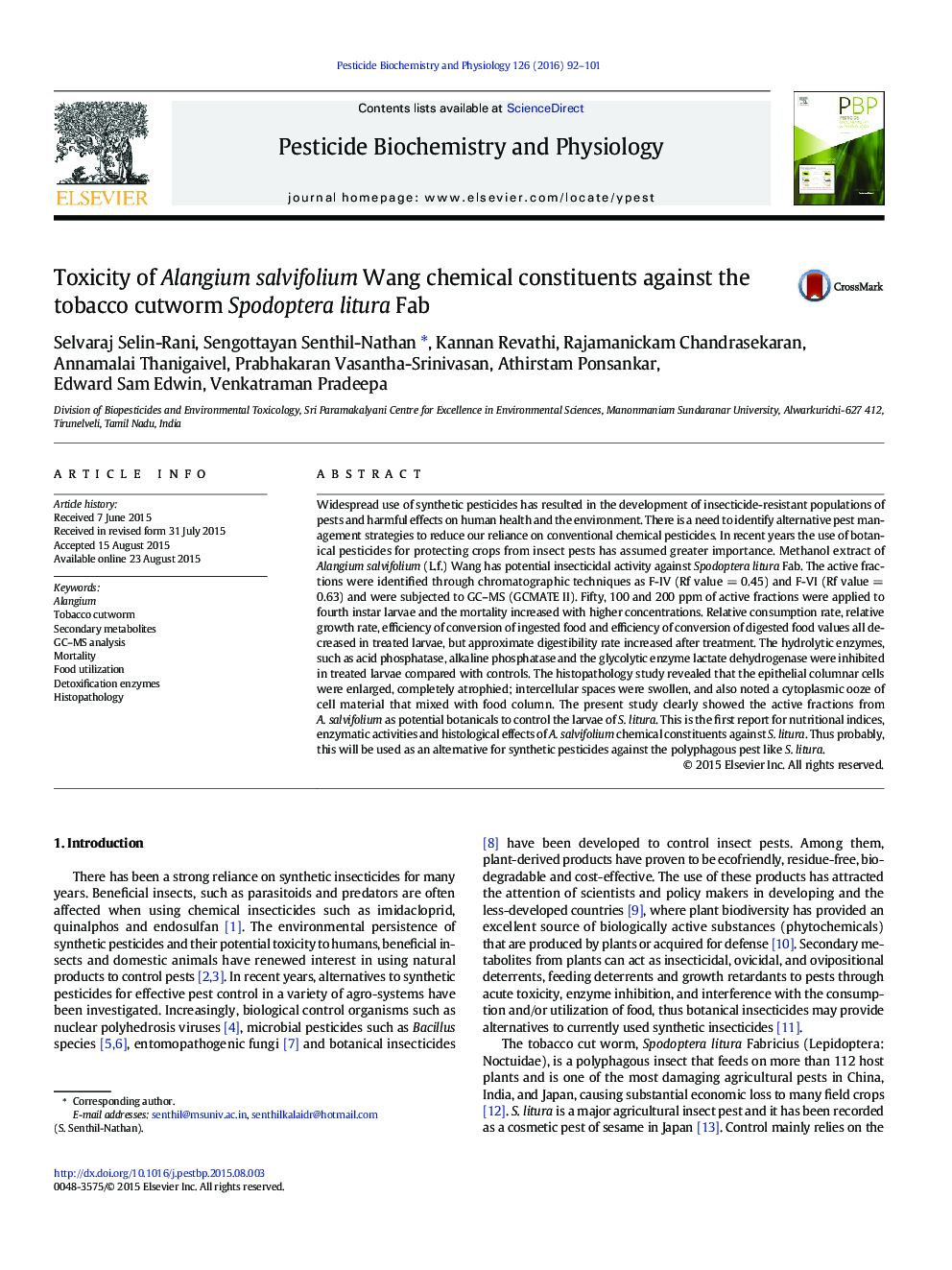| کد مقاله | کد نشریه | سال انتشار | مقاله انگلیسی | نسخه تمام متن |
|---|---|---|---|---|
| 2009083 | 1541773 | 2016 | 10 صفحه PDF | دانلود رایگان |

• The crude methanol extract from Alangium salvifolium leaf was tested against Spodoptera litura larvae.
• Isolation of active compounds was done through column chromatography and GC–MS analysis.
• Significant mortality and decreased nutritional indices were observed after treatment with A. salvifolium.
• Cell organelles and digestive physiology of S. litura were affected after treatment with A. salvifolium.
• The acid and alkaline phosphatase and lactate dehydrogenase activities decreased in treated larvae compared with control.
Widespread use of synthetic pesticides has resulted in the development of insecticide-resistant populations of pests and harmful effects on human health and the environment. There is a need to identify alternative pest management strategies to reduce our reliance on conventional chemical pesticides. In recent years the use of botanical pesticides for protecting crops from insect pests has assumed greater importance. Methanol extract of Alangium salvifolium (L.f.) Wang has potential insecticidal activity against Spodoptera litura Fab. The active fractions were identified through chromatographic techniques as F-IV (Rf value = 0.45) and F-VI (Rf value = 0.63) and were subjected to GC–MS (GCMATE II). Fifty, 100 and 200 ppm of active fractions were applied to fourth instar larvae and the mortality increased with higher concentrations. Relative consumption rate, relative growth rate, efficiency of conversion of ingested food and efficiency of conversion of digested food values all decreased in treated larvae, but approximate digestibility rate increased after treatment. The hydrolytic enzymes, such as acid phosphatase, alkaline phosphatase and the glycolytic enzyme lactate dehydrogenase were inhibited in treated larvae compared with controls. The histopathology study revealed that the epithelial columnar cells were enlarged, completely atrophied; intercellular spaces were swollen, and also noted a cytoplasmic ooze of cell material that mixed with food column. The present study clearly showed the active fractions from A. salvifolium as potential botanicals to control the larvae of S. litura. This is the first report for nutritional indices, enzymatic activities and histological effects of A. salvifolium chemical constituents against S. litura. Thus probably, this will be used as an alternative for synthetic pesticides against the polyphagous pest like S. litura.
Figure optionsDownload as PowerPoint slide
Journal: Pesticide Biochemistry and Physiology - Volume 126, January 2016, Pages 92–101